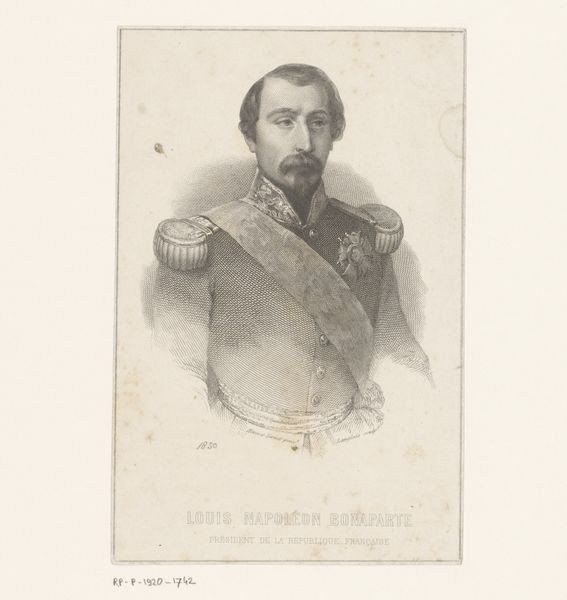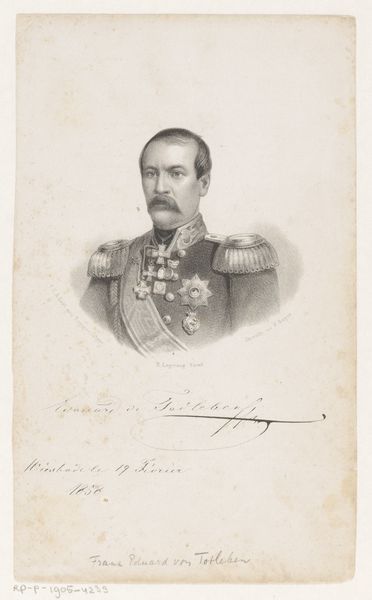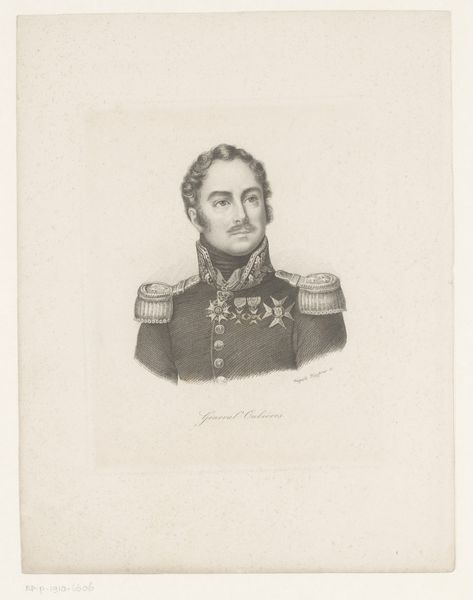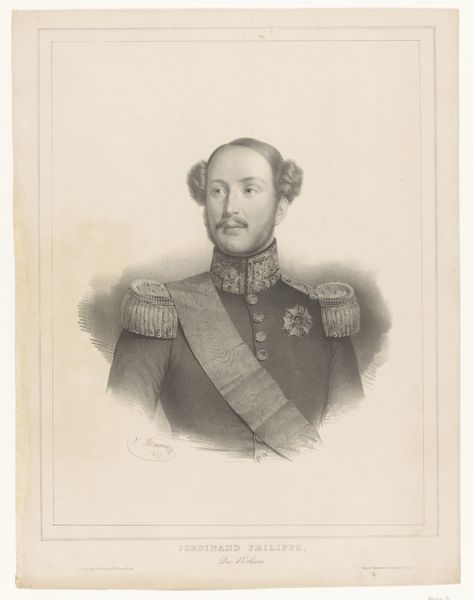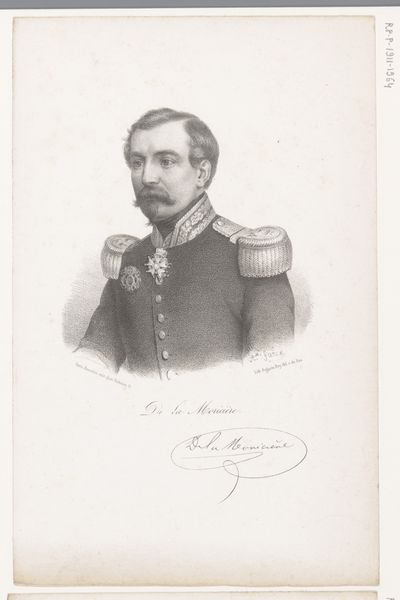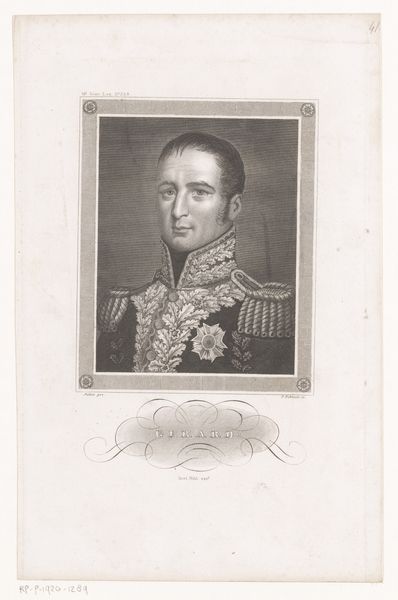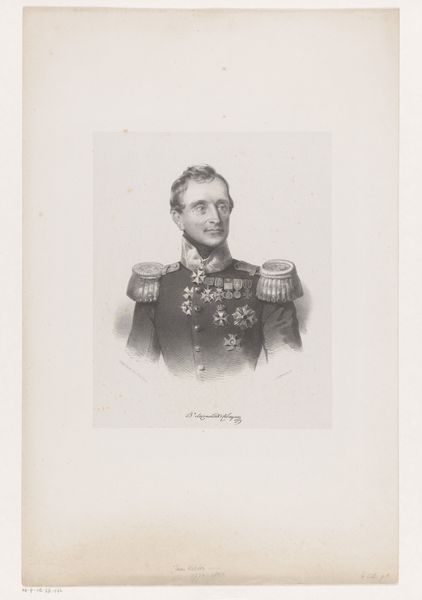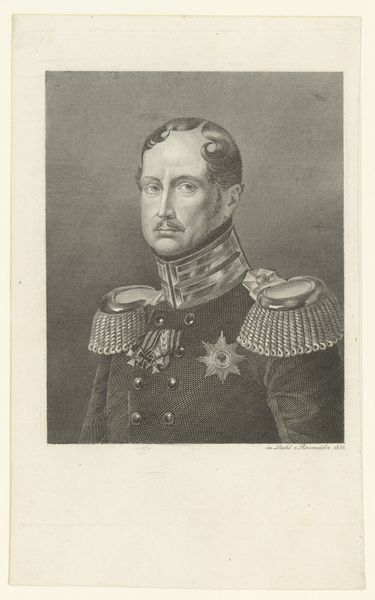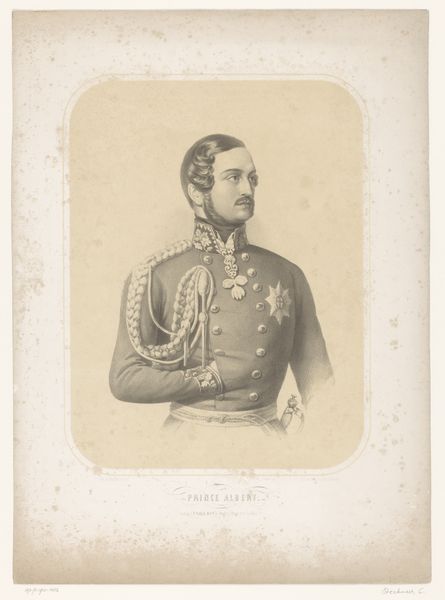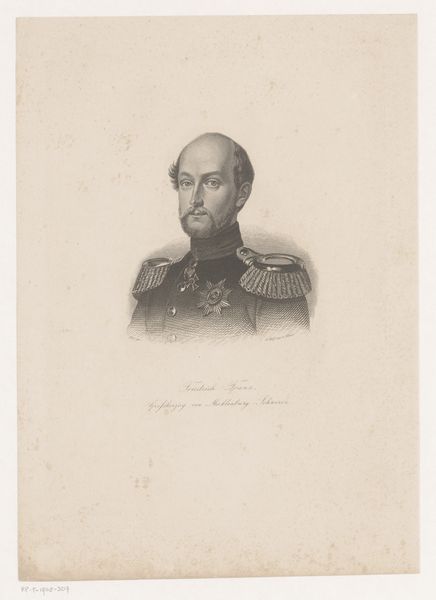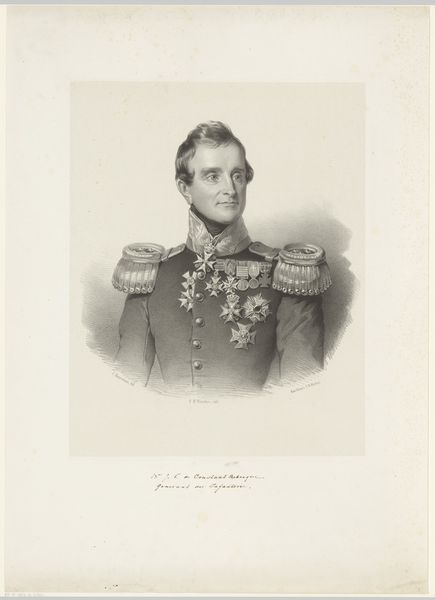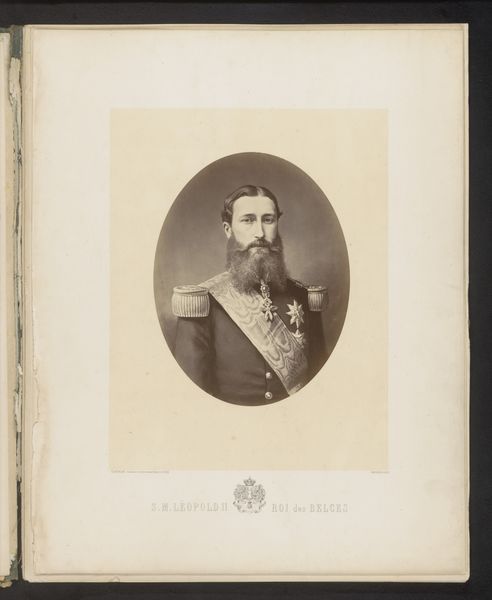
print, engraving
#
portrait
#
pencil drawn
#
16_19th-century
#
neoclassicism
# print
#
old engraving style
#
pencil drawing
#
history-painting
#
engraving
Dimensions: height 467 mm, width 323 mm
Copyright: Rijks Museum: Open Domain
Emile Pierre Pichard created this lithograph portrait of Louis-Eugène Cavaignac. Lithography, a printmaking process using a flat stone or metal plate, creates a delicate balance between artistic skill and mechanical reproduction. The process begins with drawing the image onto the plate with a greasy crayon or ink. The plate is then treated so that the ink adheres only to the drawn areas, and repelled elsewhere. When printed, the ink transfers to paper under pressure, creating a reversed image of the original drawing. The subtle gradations of tone and fine lines, as seen in the general's face and uniform, are achieved by the artist's careful control of pressure and ink density during printing. Lithography emerged as a relatively inexpensive method of mass production, making art accessible to a wider audience, and also played a significant role in disseminating political imagery. This print is part of that story: images of leaders like Cavaignac were important in shaping public opinion. It reminds us that even seemingly straightforward portraits involve complex techniques and social contexts.
Comments
No comments
Be the first to comment and join the conversation on the ultimate creative platform.
